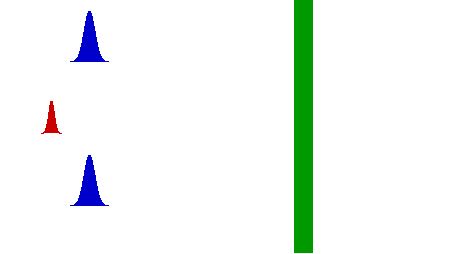|
While at Los
Alamos National Laboratory I studied femtosecond transient holography
in conjugated polymer blends and superlattices, using tunable,
nondegenerate four-wave mixing. Combined with spectral transient
absorption studies, these experiments determine the complex
photoinduced index of refraction over the photon energy range from 1 to
3 eV. The samples we use include several luminescent polymers from the
poly-phenylene-vinylene family, as well as charge transfer blends with
soluble methanofullerenes, and donor-acceptor superlattices formed by
ionic self-assembly. Diffraction efficiencies of several percent for a
single femtosecond pulse are achieved and, by controlling the degree of
charge transfer, we can tune the time constant over the range from 1 to
100 ps. This represents a potential holographic information processing
density up to 12 orders of magnitude higher than other holographic
nonlinear optical materials. Click here to see publications. |


